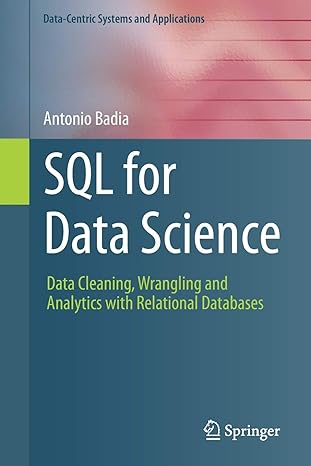Question
Consider a jewelry that only sells diamond rings and operates as follows. Each week, the store is open from Monday-Friday. The weekly (5-day) demand is
Consider a jewelry that only sells diamond rings and operates as follows. Each week, the store is open from Monday-Friday. The weekly (5-day) demand is random, and has distribution Pr(D=d) = 1/6
Assume that each ring sells for $100, and any rings unsold by the end of Friday require cleaning on Saturday, which costs $10 per ring. After a weeks worth of sales, the store owner reviews inventory on Saturday morning, and decides how many rings to order. The ring supplier offers two shipping options: standard or express shipping. Standard shipping costs $15 per ring, and the order arrives on the following Saturday (a week after it is placed). Express shipping costs $35 per ring, but the order arrives on the evening of the next day (Sunday).
Consider the following ordering policy: each Saturday morning, the store owner looks at the inventory and sees x rings. She then orders (3x)+ rings via standard shipping, and then places an express order to ensure she starts out on Monday with 5 rings (if she has more than 5 rings on Saturday morning, no order is placed). Let Xn be the number of rings in inventory on the morning of the nth Saturday, n = 0, 1, 2, 3 . . .
a. Prove that {Xn} is a DTMC.
b. Write down the state space and transition matrix of this DTMC.
c. Compute (Matlab ok) the stationary distribution of this DTMC.
d. Calculate (Matlab ok) the long-run weekly profit of the store.
Now consider the same setup except that the express shipping option is now replaced by a rustic shipping option. Bearded millenials now transport the rings in person for a fraction of the cost ($5 per ring), but also take 3 weeks to deliver the ring, i.e. an order placed on the nth Saturday morning will arrive on the Saturday before (n + 3)rd Saturday morning. Let R(1) be the number n of rings to be delivered via rustic shipping one week from the nth Saturday morning. Similarly, let R(2) be the number of rings to be delivered two weeks from the nth Saturday morning.
Consider the following ordering policy: on the morning of the nth Saturday, the store owner orders (5 X )+ rings via rustic shipping. She also orders (5 X R(1))+ nnn rings via standard shipping.
a. Model the system as a DTMC (it is no longer enough to keep track of just Xn). What is the state space? Write down the transition probability matrix or the transition diagram (whichever you prefer).
b. Use Matlab to compute the long-run weekly profit of the store.
Step by Step Solution
There are 3 Steps involved in it
Step: 1

Get Instant Access to Expert-Tailored Solutions
See step-by-step solutions with expert insights and AI powered tools for academic success
Step: 2

Step: 3

Ace Your Homework with AI
Get the answers you need in no time with our AI-driven, step-by-step assistance
Get Started


